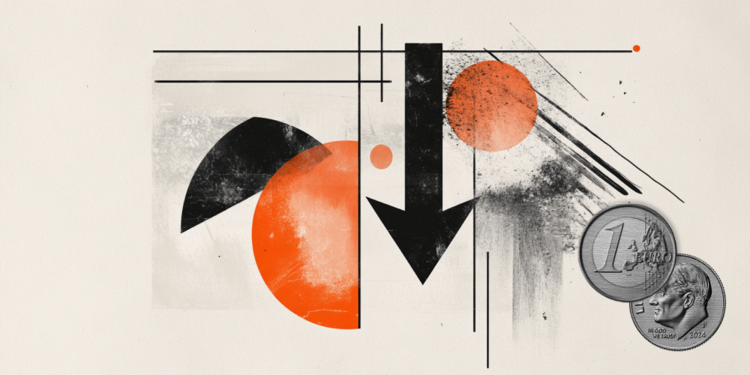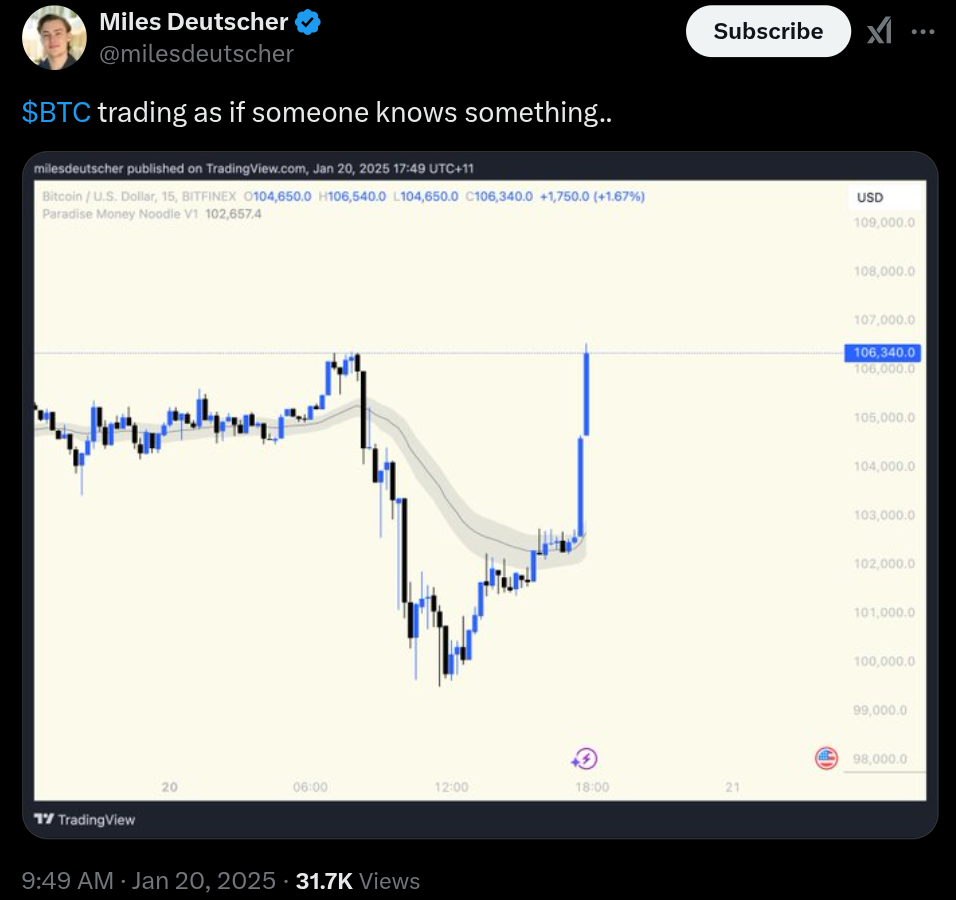Category: Forex News, News
Euro holds above key technical level to begin the week
- EUR/USD trades in positive territory above 1.0300 in the European morning.
- The near-term technical outlook points to a lack of seller interest.
- Financial markets in the US will remain closed on Monday.
EUR/USD closed the previous week in positive territory and continued to stretch higher early Monday. The pair’s near-term technical outlook points to a bullish tilt.
Euro PRICE Today
The table below shows the percentage change of Euro (EUR) against listed major currencies today. Euro was the strongest against the US Dollar.
| USD | EUR | GBP | JPY | CAD | AUD | NZD | CHF | |
|---|---|---|---|---|---|---|---|---|
| USD | -0.34% | -0.32% | -0.03% | -0.10% | -0.34% | -0.27% | 0.02% | |
| EUR | 0.34% | -0.04% | 0.21% | 0.13% | 0.05% | -0.04% | 0.24% | |
| GBP | 0.32% | 0.04% | 0.19% | 0.17% | 0.11% | 0.00% | 0.27% | |
| JPY | 0.03% | -0.21% | -0.19% | -0.07% | -0.28% | -0.35% | -0.15% | |
| CAD | 0.10% | -0.13% | -0.17% | 0.07% | -0.18% | -0.17% | 0.08% | |
| AUD | 0.34% | -0.05% | -0.11% | 0.28% | 0.18% | -0.19% | 0.10% | |
| NZD | 0.27% | 0.04% | 0.00% | 0.35% | 0.17% | 0.19% | 0.08% | |
| CHF | -0.02% | -0.24% | -0.27% | 0.15% | -0.08% | -0.10% | -0.08% |
The heat map shows percentage changes of major currencies against each other. The base currency is picked from the left column, while the quote currency is picked from the top row. For example, if you pick the Euro from the left column and move along the horizontal line to the US Dollar, the percentage change displayed in the box will represent EUR (base)/USD (quote).
The selling pressure surrounding the US Dollar (USD) at the beginning of the new week helps EUR/USD hold its ground.
Stock and bond markets in the US will be closed in observance of the Martin Luther King Jr. Day holiday on Monday. However, investors will pay close attention to Donald Trump’s comments on his Inauguration Day. In case Trump refrains from speaking on his tariff policy and adopts a softer tone regarding the US-China relations, the USD could have a hard time staying resilient against its rivals.
Over the weekend, Trump noted on Truth Social that he had a call with Chairman Xi Jinping of China. “It is my expectation that we will solve many problems together, and starting immediately,” Trump said.
Nevertheless, there could be a delayed reaction to this event. Once the bond market returns to action, it will likely become more clear how Trump’s inauguration could drive the USD’s performance in the near term.
EUR/USD Technical Analysis
EUR/USD holds above the Fibonacci 23.6% retracement of the December-mid-January downtrend and the Relative Strength Index (RSI) indicator on the 4-hour chart rises toward 60, reflecting a buildup of bullish momentum.
On the upside, the 100-period Simple Moving Average (SMA) forms immediate resistance at 1.0325. Once EUR/USD rises above this level and starts using it as support, 1.0390-1.0400 (Fibonacci 50% retracement, 200-period SMA) could be seen as the next bullish target. On the downside, 1.0290-1.0300 (50-period SMA; 20-period SMA, Fibonacci 23.6% retracement) aligns as strong support area before 1.0250 (static level) and 1.0200 (end-point of the downtrend).
Euro FAQs
The Euro is the currency for the 19 European Union countries that belong to the Eurozone. It is the second most heavily traded currency in the world behind the US Dollar. In 2022, it accounted for 31% of all foreign exchange transactions, with an average daily turnover of over $2.2 trillion a day. EUR/USD is the most heavily traded currency pair in the world, accounting for an estimated 30% off all transactions, followed by EUR/JPY (4%), EUR/GBP (3%) and EUR/AUD (2%).
The European Central Bank (ECB) in Frankfurt, Germany, is the reserve bank for the Eurozone. The ECB sets interest rates and manages monetary policy. The ECB’s primary mandate is to maintain price stability, which means either controlling inflation or stimulating growth. Its primary tool is the raising or lowering of interest rates. Relatively high interest rates – or the expectation of higher rates – will usually benefit the Euro and vice versa. The ECB Governing Council makes monetary policy decisions at meetings held eight times a year. Decisions are made by heads of the Eurozone national banks and six permanent members, including the President of the ECB, Christine Lagarde.
Eurozone inflation data, measured by the Harmonized Index of Consumer Prices (HICP), is an important econometric for the Euro. If inflation rises more than expected, especially if above the ECB’s 2% target, it obliges the ECB to raise interest rates to bring it back under control. Relatively high interest rates compared to its counterparts will usually benefit the Euro, as it makes the region more attractive as a place for global investors to park their money.
Data releases gauge the health of the economy and can impact on the Euro. Indicators such as GDP, Manufacturing and Services PMIs, employment, and consumer sentiment surveys can all influence the direction of the single currency. A strong economy is good for the Euro. Not only does it attract more foreign investment but it may encourage the ECB to put up interest rates, which will directly strengthen the Euro. Otherwise, if economic data is weak, the Euro is likely to fall. Economic data for the four largest economies in the euro area (Germany, France, Italy and Spain) are especially significant, as they account for 75% of the Eurozone’s economy.
Another significant data release for the Euro is the Trade Balance. This indicator measures the difference between what a country earns from its exports and what it spends on imports over a given period. If a country produces highly sought after exports then its currency will gain in value purely from the extra demand created from foreign buyers seeking to purchase these goods. Therefore, a positive net Trade Balance strengthens a currency and vice versa for a negative balance.
Written by : Editorial team of BIPNs
Main team of content of bipns.com. Any type of content should be approved by us.
Share this article:









